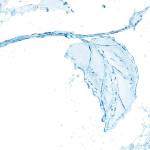We all want to get the most out of our day. You want to be full of energy, conquer your goals and be successful. We are constantly on a quest to find the best inspirational solutions to get us trough the day. Sometimes the best solutions are where we least expect them – right in front of our nose.
To master the challenges of the day we need loads of energy, inspiration, good mood and grit to stand our grounds in the complex world we are living in.
Millions of dollars are spent each month on bigger and better things to make us grow. Sometimes it is simply what we call affordable luxury, a small token with high purpose which will have the biggest impact on our life.
We normally treat water to quench our thirst, many do not see water as an indulgence to make our day. This is when fine water comes into the picture.
Start the day
To start the day with a fine water which suites our taste, may it be with bubbles or without, will set our mood into the right direction. Knowing more about where the water came from, picturing the clear mountain stream or the snow capped mountain will enhance our spirit. We can choose a water from a tropical paradise or from a stream nearby, the possibilities are endless. The important element is that we bring meaning into our present moment, rather then just opening up the faucet and get some tab water.

In the past years I made it a joyful practice every morning to pick out one tea a day and drink at the office, re-steeping a high quality loose leaf tea which keeps on giving. This year I am going one step further. I am selecting several teas and matching them to my energy and mood level throughout the day. I found one more habit loop which can make me more productive and brings more joy to my day.

Having tea and fine water in my life is something I am always grateful for and which I am trying to appreciate on a daily basis.
Fine Water
Fine Water gives me the ability to fine tune my hydration needs and to make sure that I take in the right level of minerals needed for my daily growth. My zero-calorie drink habit forces me to search for the most desirable taste and flavor paired with the satisfaction that I am fully in charge of my calorie intake.

Select a Tea to fit your mood
My tea selection in the first half of the day is normally more mellow – white and green teas are the order of the day. I still enjoy the ritual in the morning to fill up empty cotton tea bags with my favorite high quality loose leaf tea. It brings me so much joy to check in with my mood for that day and select the perfect match. Some days I select a Japanese Sencha or a Dragonwell tea from China. Other days I will go for a Anji Ba cha or a Yin Zen. For the afternoon normally I pick a strong black tea. I tend to lose some of my energy in the afternoon, so I am in need of a pick-me-up. I normally tend to pick a strong second flush Darjeeling tea or a traditional Earl Grey. It has made a big difference in the dynamics and productivity in the afternoon.

For me the tea and water experience is a complete package. Try to explore the terroir of a fine water and tea, research the source of a water, look at the TDS and mineral levels to better understand what to expect from a certain fine water.
Research the terroir of a tea, where it comes from , what the desired taste should be and how it should be brewed. Select a cup or mug which connects with you. All these elements combined set the foundation for a great beverage experience. When the fine water or tea hits your taste buds, it will build on this knowledge and the experience becomes so much more rich.
These are the simple pleasures, the affordable luxuries which can positively enhance your day. We are living in a complex world surrounded by challenges, but you have the ability to control and positively impact your day with these little habits and procedures. When your focus zooms away from the noise which is around us and we focus on the joyful moments and environments which we have created, our lives will improve and our mood will change for the better.
Stay Thirsty!













































